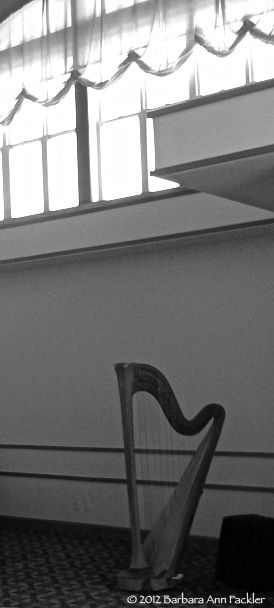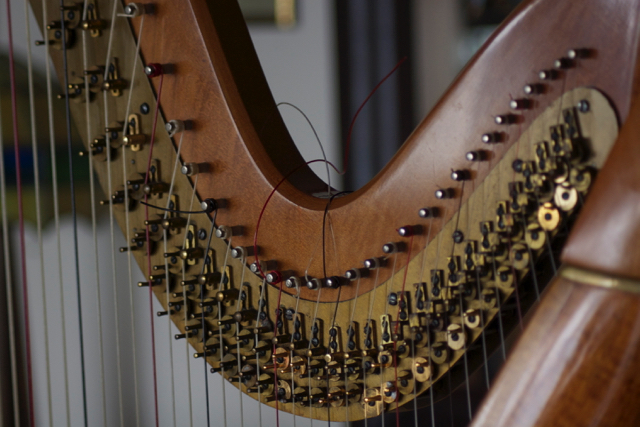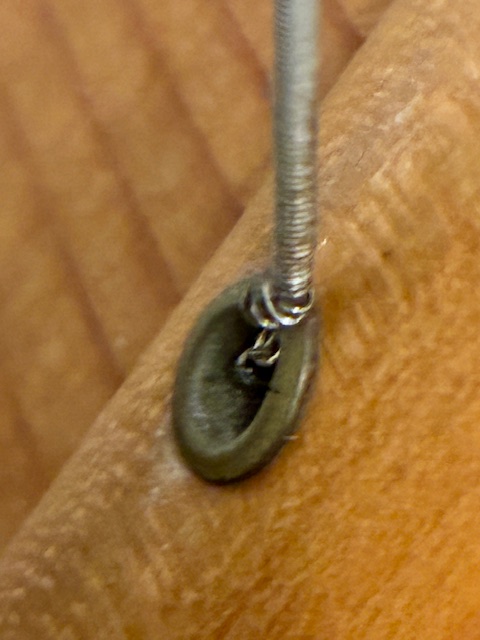

It’s tempting to leave new harp strings untrimmed, wrapped around the neck of the harp, seemingly out of the way. Other than the fact that it’s unsightly, there can be good reason to trim these strings. It’s possible to get sympathetic buzzing from the long ends touching each other,
vibrating with certain frequencies.
Instead of leaving a lot of extra length, try trimming well conditioned strings very close to the tuning pin and leaving your new strings with an extra length of about half an inch. This leaves just enough to identify the new strings that are going to need extra attention but not enough to cause problems.


Strings don't last forever. Harps that get a lot of use go through more strings than harps that are only lightly played but that doesn't mean you can ignore your strings.
This string is from a harp that had a difficult to locate sympathetic buzz.
After checking all the usual culprits, the very old wire strings were examined.
Aha! That's it, the strings were literally coming apart and were buzzing against the center strip.
Next time you tune your harp, take a look at the condition of those strings you've got!

Check humidity in your studio and maintain a healthy humidity for your harps. Lack of humidity can cause tuning pins to slip, gut strings to dry out and more serious complications if left unchecked. Read some reviews of humidifiers and find a solution for your space that works. Your harp will be happier and so will you.
Do you replace your own pedal felts? If so, you can save $$ by purchasing the fabric in bulk. Look for billard table cloth and choose any color you'd like!
Years ago I bought a yard of blue felt for pedal felts, on the recommendation of Pat Dougal (harp tech in Joliet, IL).
Here's plans for a DIY raincoat for a small harp. This should be enough for most medium to small lever harps. Download the PDF with the free plans.